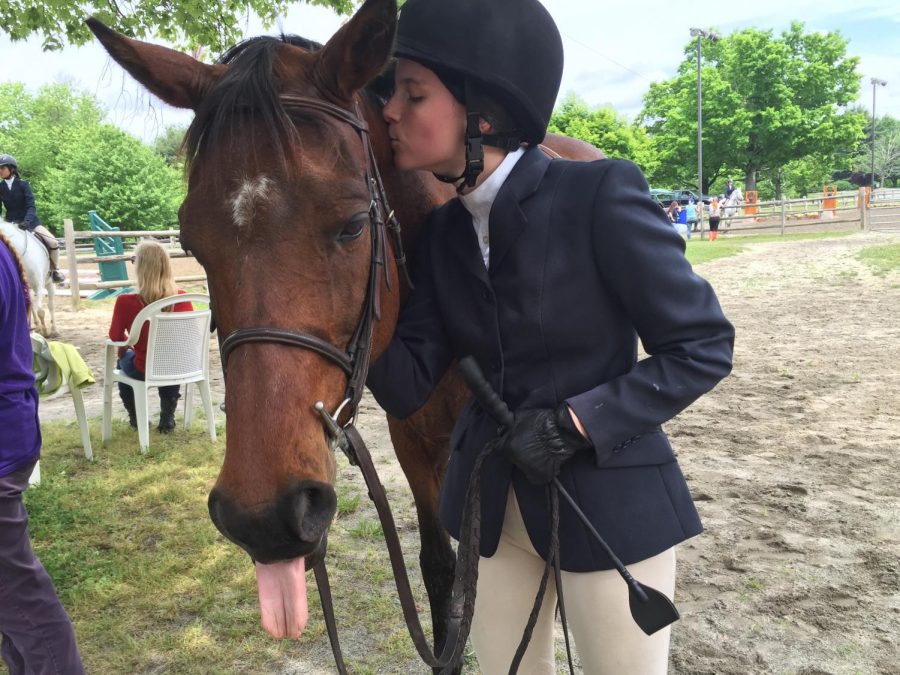The horse’s hooves dash across the ground, beating hard upon the earth with a steady cadence. His rider, Camille Balo, almost grins in delight. It’s exhilarating — man and beast united as one, gliding over the worn grass. A gust of wind follows them, tearing dust clouds as they rush by. Up ahead, a wooden hurtle stands stark against the flat landscape, three rungs tall. She lets her body relax, leaning forwards for the jump. Thump. Her heart beats hard, her hands slightly tremor. Thump. She takes a breath. Focus. Thump. The horse jumps, rising, floating over the hurdle. They fly.
Even from a young age, Camille Balo had always been fascinated with horses. “I first started riding when I came to New Jersey, which was probably around five or six,” Balo said, reflecting. “I’ve always been in love with horses, as my uncle was a veterinarian and horse trainer. I always thought that horses were these beautiful creatures, and I’ve always wanted to ride them.”
The library around her is quiet. The occasional flip of a page or the odd cough echoes throughout the open room, before fizzing to oblivion.
“I do jumpers.” She elaborated. “It’s a faster type of riding [as compared to hunters] where you have to get over the jumps as fast and clean as possible. There is a type of thrill in it, and I’ve always been a daredevil.” But of course, riding is more than simply a thrill.
“Many people think that it’s just an individual sport, but it’s really not that at all: you’re with another animal, it has a mind of its own, it can do whatever it wants— you’re just trying to convince it to do what you want.”
Although it may sound intimidating, this intimate bond with nature has multiple health benefits for the rider. “…Horses today have become key players in the mental rehabilitation of many people around the world,” says Joseph Bennington-Castro. “Hippotherapy, for example, utilizes the movement of horses for physical, occupational, or speech therapy, and has been used to treat [various] motor and sensory issues…”

A study performed by the Frontiers in Public Health correlated improvements in mental exercises by children before and after riding compared to other exercises.
In addition to the mental benefits that come with horseback riding, it is also a great source of exercise. According to Sarah Evers Conrad, “Riders can develop better reflexes and a sense of balance and coordination as they use their entire body to guide and propel the horse forward. Riding also offers cardio benefits. Riding, lifting saddles onto the back of a horse, mucking stalls, moving hay bales, etc., builds muscles and physical strength.”
But beyond the mental and physical advantages that riding offers, it ultimately returns to the soul of the rider which makes it worthwhile. “It’s very therapeutic,” Balo says. “Just getting on a horse, and just riding— your mind clears, and you [immerse yourself] in your surroundings. It’s definitely healing.”








